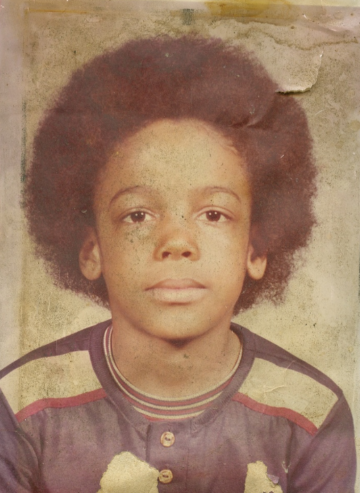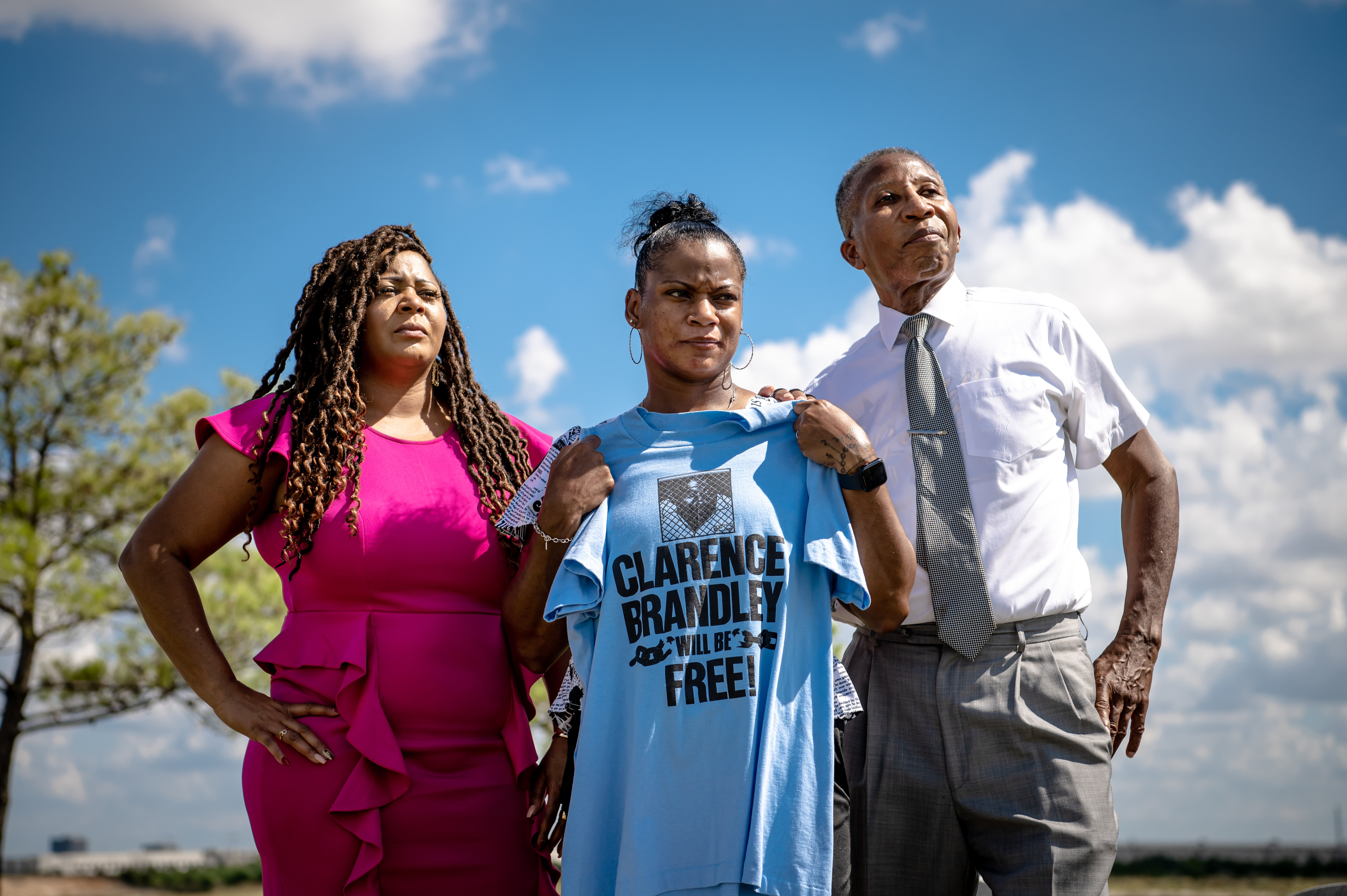
Two Executions, Many Questions about Mental Health, Innocence
Texas' deadly spring continues: Two Black men, Gary Green and Arthur Brown Jr. are set to be killed this week by the state.

Editor’s Note, March 6 2023: This story has been updated with information from one of Arthur Brown’s trial lawyers.
Two men, Gary Green and Arthur Brown Jr., are set to be executed by the State of Texas next week. Lawyers for both men have raised concerns about their intellectual disability, and in Brown’s case, his defense argues the state has withheld evidence for nearly 30 years that could have cleared his name.
Texas has already executed three people in 2023—Robert Fratta, Wesley Ruiz, and John Balentine—with five more scheduled before the end of the year. (Henry Skinner was also scheduled to be executed in September, but he died from surgery complications last month). This is an uptick from 2022, when the state executed five people total, but the past three years of five or fewer executions have been an anomaly.
Nationally, executions have dropped considerably in the past two decades as more states do away with the death penalty. Texas executed 40 people in 2000, but by 2010, the average per year was closer to 20. The number has declined since then—the highest number of executions in the past five years was in 2018, when 13 people were killed.
Some years are less deadly than others, but the big picture reveals a highly active capital punishment machine.
Black people are disproportionately sentenced to death in Texas, making up about 46 percent of the condemned population. Both Green and Brown are Black.
Texas’s execution chambers have seen the harsh light of scrutiny in recent months, as a group of condemned men filed suit alleging the state planned to use expired drugs—specifically the powerful barbiturate pentobarbital—to carry out lethal injections, which could make the process more painful. A judge briefly stayed Fratta’s execution due to concerns about the potentially expired drugs, but she was quickly overruled by the state’s highest courts.
The conversation about the death penalty has changed considerably since Arthur Brown Jr. was convicted nearly 30 years ago—and even since Green was sentenced more than a decade ago. States can no longer execute people with intellectual disabilities. In Texas, the legislature is considering a bill that would bar people with severe mental illness from the death chamber. And leaps and bounds in forensic understanding have rendered old ideas about evidence obsolete. Even so, the road to relief for these men is long in Texas.
A Question of Sanity
Set to be killed Tuesday, March 7, Green was sentenced to death in 2010 for the murder of his wife, Lovetta Armstead, and her six-year-old daughter, Jazzmen, in September 2009. He confessed to committing the crime when his wife wrote him letters ending the relationship, according to court documents. He wrote a letter back that said he was going to “take five lives” that night—presumably his wife, her daughter, her two sons, and himself. He ended up not killing the boys but attempted to overdose on pills after the murders.
Green had a history of mental illness, suffering from paranoia and anger issues. Just a month before the murders, he checked into the Timberlawn Psychiatric Hospital in Dallas, where he stayed for four days. He told police he believed Lovetta and her children were conspiring against him and claimed to hear voices. He said he attempted to take his own life “so that the family would be back together in heaven.”
Family members and ex-girlfriends testified that he was paranoid for years before the crime, refusing to sit with his back to the door and often carrying a baseball bat with him for protection. He reportedly had delusions that he was being followed by vampires. An ex-girlfriend testified she would hear him speaking incoherently to himself when he was alone. After his stint in Timberlawn, he was prescribed medication for schizophrenia and depression, but he couldn’t afford to continue taking it, according to a memo from his lawyer Michael Mowla.
His defense unsuccessfully argued that his mental illness led him to commit the murders, with experts testifying he likely had schizoaffective disorder. His conviction was upheld on appeal.
Mental illness is a tricky defense in Texas, but the potential new legislation exempting people with severe mental illness from the death penalty would signal an important progression—when states set these standards, the Supreme Court takes notice, said Richard Dieter, interim executive director of the Death Penalty Information Center.
“Perhaps clemency is warranted, or perhaps a change in the law, such as Texas is considering,” Dieter said. “It would be a shame if Texas passed this law and people who were on death row at the time the legislature was debating it were executed.”
Last month, Dallas District Attorney John Creuzot declined to join the defense’s motion to halt the execution. Green’s defense pointed out that Creuzot had previously signed a letter with other prosecutors that criticized the current application of the death penalty in the U.S. and pledged to seek relief for people on death row with “intellectual or cognitive challenges that diminish their ability to fully understand and regulate their own actions.” Green’s IQ, Mowla said, qualifies him as “borderline intellectual functioning.”
“It would be a shame if Texas passed this law and people who were on death row at the time the legislature was debating it were executed.”
Green’s defense also asked Creuzot to help halt the execution while the litigation related to Texas’s use of expired drugs in lethal injection moves through the courts.
Thirty Years on the Row
Arthur Brown Jr. has been sitting on death row since 1994. He was convicted based on bad forensics and potentially flawed eyewitness accounts, which newly discovered evidence long suppressed by the Harris County District Attorney’s Office calls into question.

“Arthur Brown is a Black, intellectually disabled man who has been on death row for 30 years. And over that entire time, he has declared his innocence and been fighting for it in court,” said Burke Butler, executive director of the Texas Defender Service, who is very familiar with the case. “The district attorney has just revealed evidence that there are other potential perpetrators. This case is extremely concerning.”
Brown and two other men, Marion Dudley and Anthony “Antonio” Dunson, were convicted in connection to the 1992 murder of several members of a family and their neighbor in Houston. Brown was tried first and sentenced to death. Dudley was also given the death sentence and executed in 2006. Dunson is serving a life sentence. The men have always maintained their innocence.
“Texas does not have a good track record when it comes to innocence claims with people on death row,” Butler said. “Melissa Lucio’s case last year really showed us that in Texas, there’s widespread and bipartisan agreement that we just should not be executing people who have viable claims of actual innocence. And we’re seeing those issues come up again in Arthur Brown’s case.”
On the night of June 20, 1992, a group of men entered the home of Rachel Tovar on Brownstone Lane. The men bound and shot the six people inside the house: Rachel and her husband Jose; Frank Farias, their son; Jessica Quinones, their daughter-in-law; Audrey Brown, their neighbor; and Nicholas Cortez, an acquaintance who entered the house during the break-in. Only Rachel Tovar and Cortez survived. The family was known to sell drugs out of the home.
Shortly after the shooting, while the two survivors were in the hospital, police interviewed Tovar, who described three men, none of whom fit Brown’s description (although she later said she had no recollection of this interview and that the things she told police could have been incorrect). Cortez was unable to pick Brown out of a photo lineup, according to court documents. But his story would change at Brown’s trial, where he identified him in front of the jury.
Brown’s defense has found a potential red flag with the eyewitness testimony. According to medical records only just released by the DA’s office, the state knew that both eyewitnesses had suffered head trauma during the attack. Tovar had suffered damage to the part of her brain responsible for eyesight, and according to Tovar’s sons, she had extreme memory issues after that night. Cortez also showed signs of severe head trauma at the hospital, documents filed by the defense show.
Another key witness was Brown’s sister, Carolyn Momoh, who told police Brown had confessed to the murders and that she had a gun that was missing at the time of the murders. Momoh later said she had lied after police threatened and coerced her—she was just saying what they wanted her to say.
The state didn’t just rely on eyewitnesses to persuade the jury, though. They brought in a firearms expert who claimed that he was “absolutely” certain the bullets used to kill the victims had come from two guns linked to Brown and his acquaintances.
But in 2015, Brown’s case was re-examined to see whether the state had allowed the firearms expert to testify falsely during the trial. The results were damning: Two independent weapons experts said there was no way to tie the guns to the bullets. The firearms expert had misled the jury at the trial by claiming the bullets matched “with unflinching certainty.” The trial court sounded the alarm, recommending relief for Brown based on the new forensic context. The Court of Criminal Appeals disagreed, saying even if Brown wasn’t a shooter, he had been convicted as a participant in the crime. Justice Elsa Alacala dissented, writing that she believed the ballistic evidence “was not only false or misleading but also material.” She argued it was likely the jury wouldn’t have imposed the death penalty if they didn’t believe Brown shot the victims.
“The political factors weigh heavily in Texas, as it is well known as the state having the most executions in the modern era of the death penalty.”
Brown’s defense team, led by the Office of Capital and Forensic Writs, filed several documents with the state Wednesday that bring the extent of potential evidence suppression to light. The late submissions were due in large part to the newness of the team—the office was appointed as his counsel just nine months ago—and difficulties getting documents from the district attorney’s office. The documents detail interviews with Anthony Farias, Tovar’s son, where he identifies the people who killed his family members as a group of men, including Terrell Hill, an alternate suspect in the case who was killed during a robbery in Alabama “while in possession of the alleged murder weapon in this case,” according to the newest writ of habeas corpus.
One of Brown’s court-appointed trial lawyers, Patricia Nasworthy, said Cortez’s courtroom identification of Brown was just one of several things the state sprung on them at trial. “It was just surprise after surprise after surprise,” she told the Texas Observer. “They didn’t play fair.”
She said the state never told her about Farias’ statements, which supported her trial theory that Hill was the real killer. She said if she had known about Farias’ statements to police, she would have called him as a witness. She also had no access to the medical records that cast doubt on the eyewitnesses. This was not for a lack of trying—Nasworthy made several trips to Tuscaloosa, Alabama to interview people, meet with police, and dig through records herself. She didn’t know the state had what she was looking for all along.
“I am very, very upset by this [case],” Nasworthy said “It really bothers me. I’ve been able to put it on a shelf for 30 years, and now he might be executed. And now we’re finding out, after all these other lawyers have been on this case, that suddenly there’s more evidence.”
The current defense team is also requesting DNA testing for the bedsheets used to tie up the victims and a knife used to cut the sheets into strips. Witnesses say Brown was the one to restrain the victims, so his defense argues if someone else’s DNA is on the evidence—not Brown’s—that would prove he was falsely identified.
The state of Texas has long been against Brown’s attempts to clear his name. “The state court proceedings in Brown’s case were more than adequate; he is merely displeased with the final result,” wrote representatives for the Attorney General’s Office in a 2018 in response to his defense’s motions to the U.S. Supreme Court.
Dieter said last-minute motions, particularly with innocence claims, have varying degrees of success with appeals courts. It often depends on the partisan lean of the state and how the public views the issues being raised.
“That’s partly political,” Dieter said. “Judges are often appointed or elected. They want to show that they’re serious about crime. The political factors weigh heavily in Texas, as it is well known as the state having the most executions in the modern era of the death penalty.”
But in Brown’s case, the implications of his potential innocence reach much further.
“I think that one reason we should be really concerned about this case is because we don’t want to make the same mistake again,” Butler said. “The evidence that emerged in this case not only shows that Arthur Brown was wrongfully convicted and has an extremely compelling claim of actual innocence, but also, if this pans out, that Texas wrongfully executed someone in 2006.”


